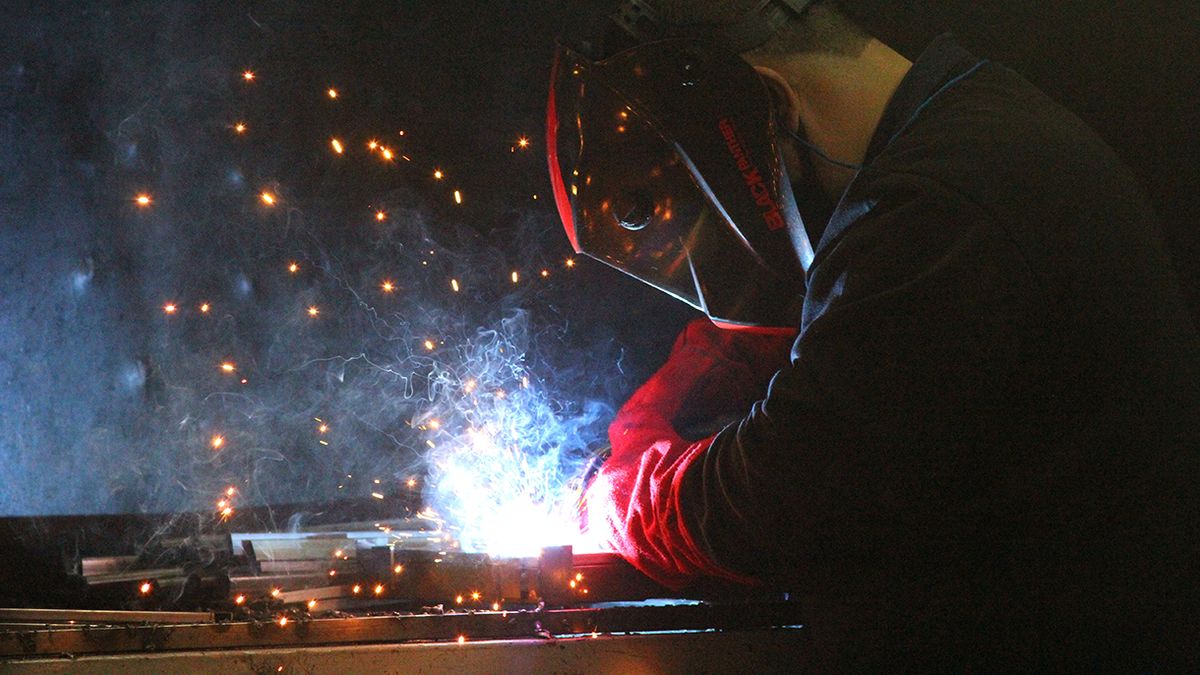Thus, although the June data released by INDEC are positive, the trend (at least in the monthly comparison) it could be reversed from July, but especially in August and September.
“The reality is that in these statistics the worst moment is not taken, which is from 15 days ago to date. It is from when the great concern arises in the sector, because the stocks are running out and the companies lack raw materials,” Daniel Rosato, president of Industriales Pymes Argentinos, told Ámbito.
As a graph, Rosato pointed out that the entity carried out a consultation on 84 companies, of which 21 said that they project that they will be better off, while the remaining 63 said that, if the problem of raw materials is not solved, they will be worse off. “Some even say that if the problem is not solved now, we will be worse off”he underlined.
The businessman maintained that the lack of imported supplies does not affect all items equally, but he detailed: “As for the data, July is going to begin to show a different reality and the problem is going to be August and September, when we are going to have a more complicated panorama. Because companies start to have no stock. Over there, in some cases, some industries have a component, but they lack another to produce”.
“Indeed, heThe industrial activity had a slowdown in its growthproduct of the lack of imported inputs in some of the industrial sectors. And also due to the fact of a fall in consumption in general. The pace of growth, which had been very strong, has slowed down in this last period,” said Juan Carlos Uboldi, director of the industrial sector at CAME.
Looking ahead, Rosato pointed out that he requested a meeting with the Secretary of Production, Jose Ignacio De Mendiguren and the Secretary of Commerce, Matias Tombolini, and explained what should be the way forward to solve this problem: “That the dollars that come out are for the industry, for the productive sector and thus be able to supply the demand. We must work together to prevent production processes from being stopped, which generate labor and exports. And that there is supply, because the problem is that there is demand, but there is no supply. Then prices go up. Increased supply will drive prices down.”.
In this scenario, from LCG they projected: “Greater restrictions on imports given the need to accumulate reserves, investment decisions that will continue to be delayed in a context of high economic instability and consumption that will hardly drive strongly with real wages adjusting downwards, These are all factors that make us expect a drop in activity for the second half of the year. In conclusion, it is possible that by the end of 2022, the industry is operating at a lower level than a year ago, with an average annual variation of around 4.5%”.
Construction slowed its recovery
The INDEC also disseminated the Synthetic Activity Indicator of the Building (ISAC), which although it showed a growth of 7.2% year-on-year (fifth consecutive improvement), slowed down its recovery in the monthly comparison: fell 1.8% compared to May, after two positive months. In the annual accumulated, this index presents an improvement of 6.5% compared to the same period last year.
Contrary to what could happen with industry, some indicators show that construction activity continued at a good pace during July. For instance, according to Build Indexthe sale of materials recorded a monthly rise of 7.6% and year-on-year growth of 8.4% in the seventh month of the year.
“During July, the recovery of the level of shipments of materials for residential works continued and the highest volumes of the year were recorded. Throughout these 20 years, the evolution of the Index shows that construction was and is a profitable and safe business for investors and a solid haven of value, given the volatile dynamics that our market is experiencing”, they maintain from Grupo Construya.
In this context, from LCG they pointed out that, “even with a slowdown in global activity expected towards the second half of the year and an increase in construction costs, the widening of the exchange rate gap continues to act as the main stimulating factor for the item, lowering costs measured in free dollars”. “In this sense, we expect the activity of the sector to grow in line with an annual average of 5%, above the expected growth of GDP for 2022”, they concluded.
As a complement to the ISAC data, INDEC also released information on jobs registered in construction in the private sector. It is noteworthy that in May, this indicator showed a rise of 19.4% compared to the same month of the previous year, and in the accumulated of the first five months of 2022 it registered an increase of 17.2%.
Source: Ambito
David William is a talented author who has made a name for himself in the world of writing. He is a professional author who writes on a wide range of topics, from general interest to opinion news. David is currently working as a writer at 24 hours worlds where he brings his unique perspective and in-depth research to his articles, making them both informative and engaging.




